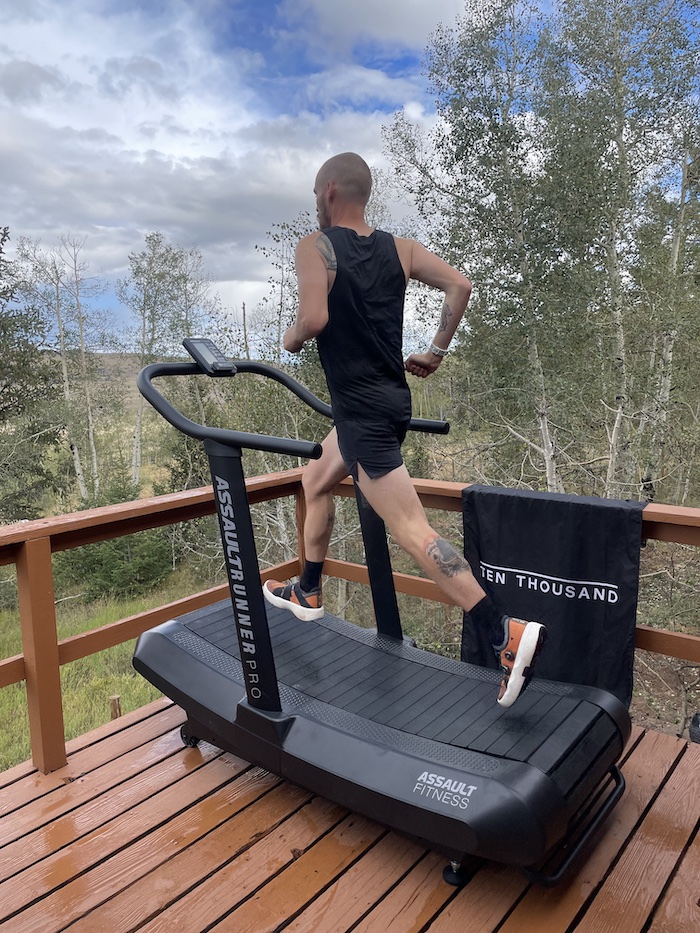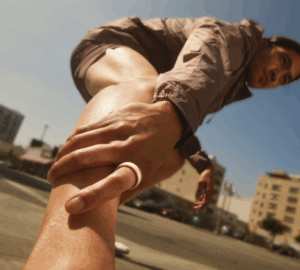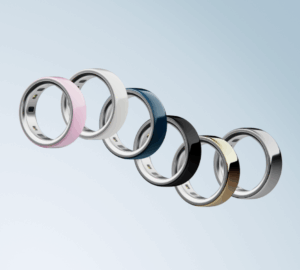Who: Don Reichelt, 37, Fairplay, CO
Surprising insight: Based on his Oura HRV data, Don noticed he was sleeping poorly on nights he ate meat. Since going vegetarian, he has seen huge improvements in his sleep and recovery.
Don, an accomplished long-distance runner, has racked up a number of impressive feats in his career. He’s won 100-mile endurance races, earned a podium finish at the Badwater 135 (a 135-mile race across Death Valley… in July!), and he’s one of the few Americans to run a sub-eight-minute-mile pace for 100 miles on a trail.
On November 3, Don will attempt to set three new world records: running the fastest 100 miles, running the most miles in 12 hours, and running the most miles in 24 hours. This will all take place on a non-motorized treadmill at Life Time Fitness in New York City. Sponsored by Life Time and Ten Thousand, this event also raises money for the Life Time Foundation.
We sat down with Don, who works as a learning and development specialist here at Oura (when he’s not running!), to learn more about how Oura played a role in his training.
Find more details about the event here, and follow along with Don on Instagram @runwithdon.
How did you get into distance running?
After college, I had gained a ton of weight, and I needed an outlet. I got back into endurance sports, which brought me to the triathlon. I realized that I hated swimming, but absolutely loved running. In my first 100-mile race, I almost didn’t finish — I was back of the pack. But I decided I was going to double down and try to get good, because I don’t like being bad at things that I’m interested in. So I just worked my butt off. And over the next three years, I worked my way up from the back of the pack and started winning races.
How did Oura help you work your way to the top?
To be a good runner, you really just need a willingness to work harder than anyone else. For me, this is where the Oura data comes in. I’ve never been the fastest guy. But I’ve always tried to be the smartest guy. I use Oura and other resources to look at my data, to look at my recovery, and to make changes, so I can go out and perform better. And that’s been my key to success.
RELATED: Meet Rosie M. an Olympic Trampolinist Who Uses Oura to Modulate Her Training
Tell us about this world record attempt.
Starting at 9am on November 3, I’m going to run on a non-motorized treadmill for 24 straight hours. The goal is just to run as far as possible within that 24-hour time period. Nobody’s ever accomplished this, so it will be a world record along the way, no matter what happens. But my targets are: the furthest run in 12 hours, the fastest 100 miles, and then the furthest run in 24 hours. So I intend to come away with three world records.

What does your training look like leading up to this?
It’s a bit of maintenance — I’ve run three races this year at or above 100 miles, so I’m coming into this with a fair amount of endurance. But the big key for my training to this has been specificity. I’d say 97% of my training over the past six weeks has been all on the Assault Runner, my partner in this attempt. I’ve been running on it inside, or I pull it out onto my deck and I run. It’s all specificity. It’s all endurance. I built up to my biggest week, which was about 130 miles all on the Assault Runner. I spend 25 to 30 hours a week training between running, strength, and mobility.
How do you use your Oura Ring to manage your training?
I’m self-coached — I don’t have a coach. So it’s really nice to have a very impartial third party technology that’s telling me what’s optimal and what is not. I typically work out twice a day, and based on my HRV data, I can determine in which workout I should push myself harder, or if the next day I need to back off.
READ MORE: Train Better Using HRV
What other insights have you learned from your Oura data?
About a year ago, I went totally vegetarian based on my HRV data. I saw that after nights when I ate meat, I was sleeping poorly. My HRV wasn’t recovering, my resting heart rate wasn’t coming down, and my training the next day wasn’t as optimal. So I went vegetarian, and my recovery has improved. As athletes, you really have to find these little ways to optimize, especially when you’re at this level. Oura has helped me make those 1% improvements in my training.
Which Oura Score matters most to you?
I’d say Readiness, because it pulls in other factors. It allows me to decide if I am going to hammer my workout this morning, or maybe I do my hard workout later in the day. Or maybe I take a nap during the day or meditate a little bit more and give my body a little extra fuel. It allows me to structure my day a little bit better based on that knowledge.
Out of curiosity, what’s your resting heart rate?
I always put an asterisk on this because I live at 10,000 feet. So my resting heart rate is a little higher than it would be at sea level. For example, last night, my lowest resting heart rate was 44. If I go down to sea level, it’s usually around 36.
RELATED: What is the Average Resting Heart Rate for Oura Members?
What’s your advice for other Oura members — specifically endurance athletes?
A lot of endurance athletes are type-A — they’re go, go, go. So it’s really nice to be able to have technology that you can rely upon that tells you, maybe it’s time to slow down, or take a rest day. Oura has taught me the importance of taking a rest day, so that I can get more out of my training the other six days a week. So my advice would be to use technology to help you be wise enough to take time off, recover, and allow your body to go back and train hard.
Running for 24 hours straight must require some serious mental fortitude. How do you train for the mental aspect of this?
This is going to be a feat that is just as hard mentally as it is physically — if not more. I know my body well enough to know I can run 24 hours in most settings. The mind is what’s worrying. So I’m doing a couple of things. I’m doing a lot of meditations from the Explore content in the Oura App, which has been working quite well. I’m also defining my why — we’re doing this for charity first. I can always remember that there’s a cause bigger than myself.
To keep things from getting stale, I’m having people FaceTime me during the run, like my mom, and I’ll listen to a mix of podcasts, music, and audiobooks. I’ve found 30 minutes is the sweet spot for content — I’ll watch a South Park episode or a YouTube documentary, then switch it up.
What’s Your Oura Story?
Everyone’s story is unique, and we’d love to hear yours. Share your story here.










